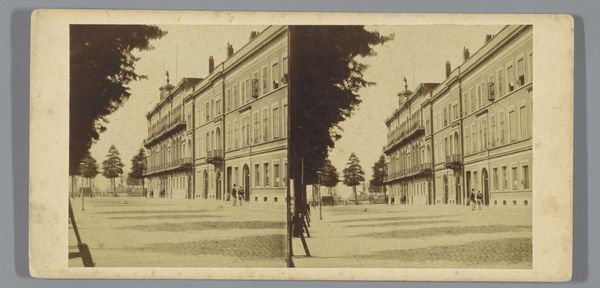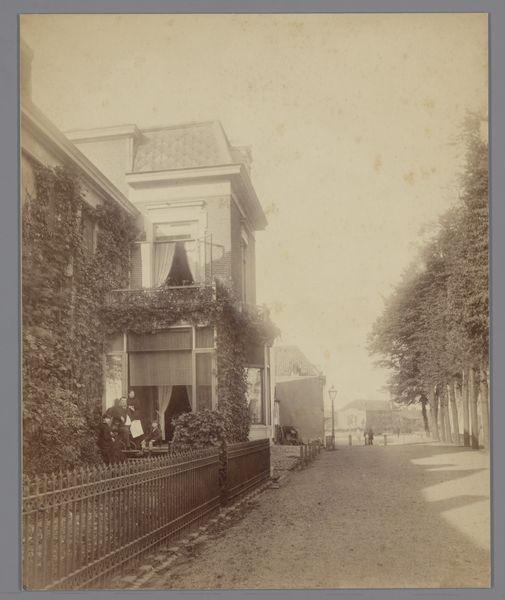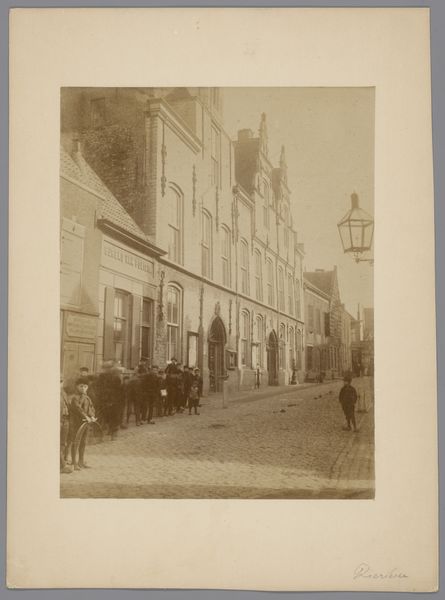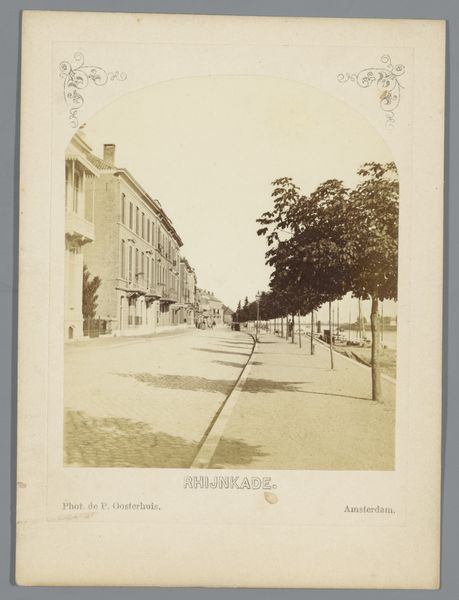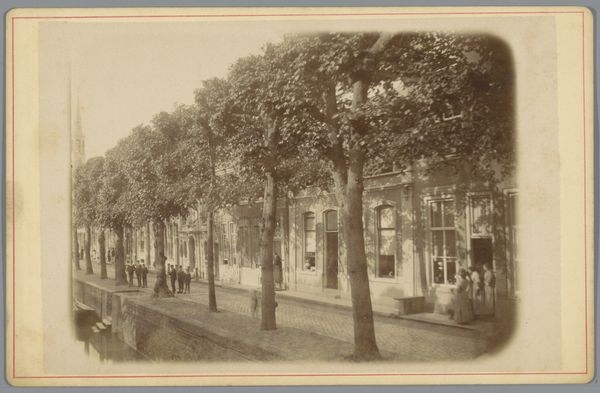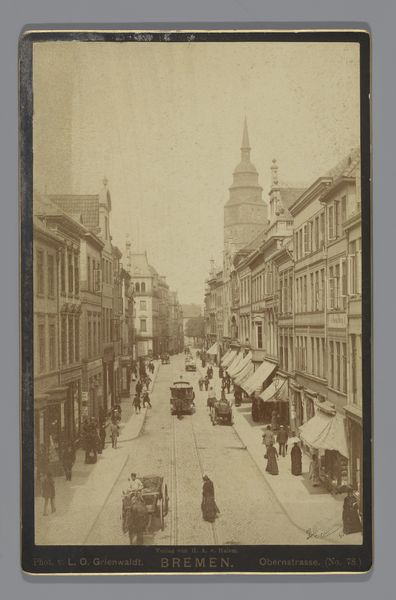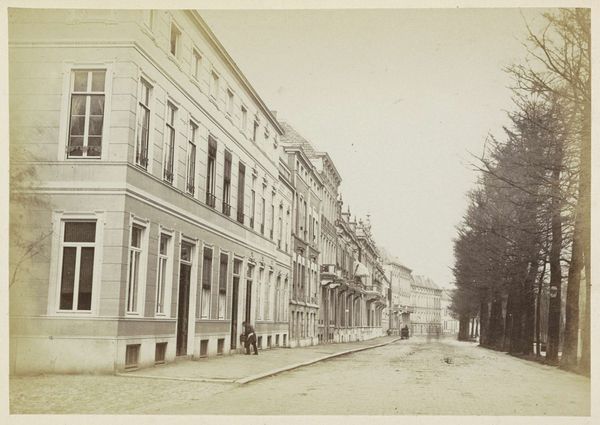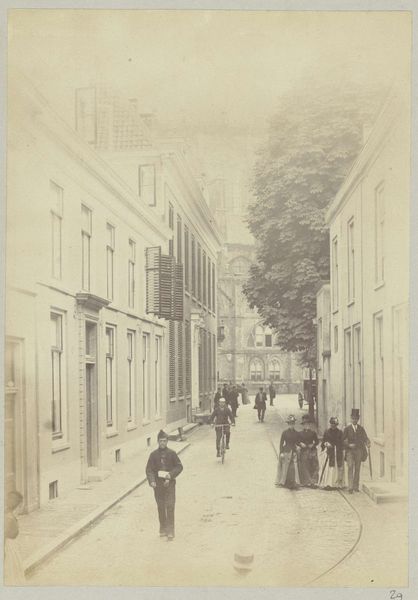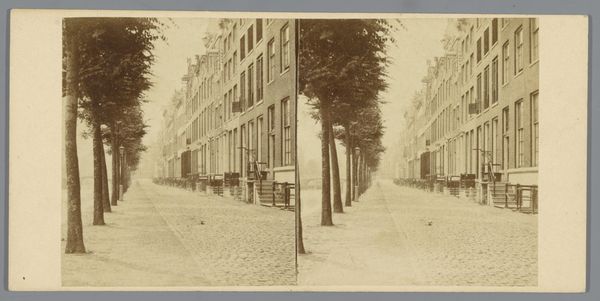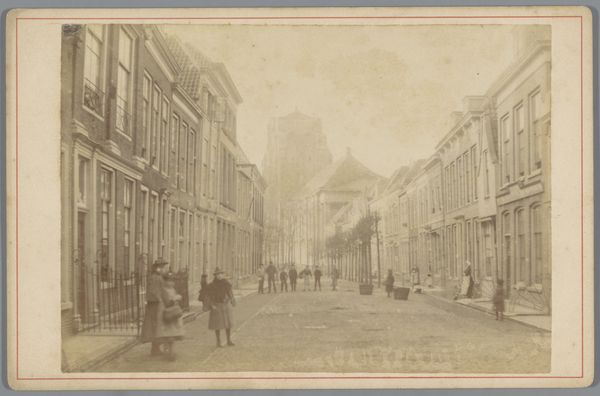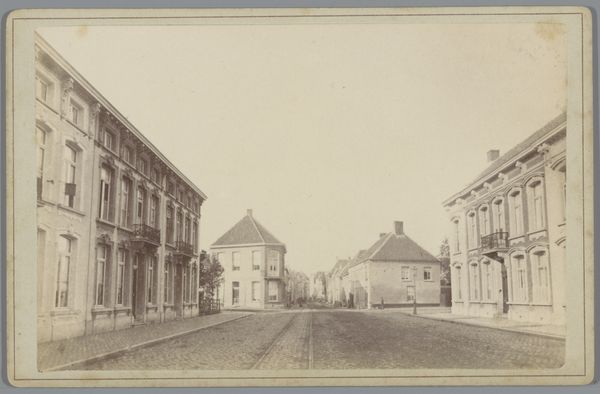
Dimensions: height 89 mm, width 63 mm, height 102 mm, width 65 mm
Copyright: Rijks Museum: Open Domain
Curator: This albumen print, taken between 1859 and 1865, is entitled "View of the Willemskade in Rotterdam" by Pieter Oosterhuis, capturing a cityscape in exquisite detail. Editor: There's an incredible stillness to it, almost dreamlike. The composition, with the strong perspective lines of the cobblestone street, leads the eye straight into the muted background. It's all stone, trees, and restrained light. Curator: Absolutely. Oosterhuis masterfully utilizes light and shadow, directing our gaze along the formal lines of the buildings and trees. It exemplifies Pictorialism's approach to elevating photography to the level of art, mimicking painterly techniques. Editor: For me, the power lies in understanding the materiality of it. Those cobblestones—each one placed by hand, forming the literal foundation of the city’s commerce and daily life. And the albumen process, the labor and skill required to create such a sharp image, speak volumes about the technological advances of the time. The workers' hands made all this possible. Curator: A crucial point. And if we consider the buildings themselves—their architecture, the symmetry, the subtle gradations of tone—we recognize a meticulously constructed visual experience. Each element contributes to a balanced whole. Note, also, how the dark, densely arranged trees on the left-hand side serve as a frame for the bright façade of buildings. Editor: True, but I keep coming back to those individual stones. Thinking about the tradesmen hauling materials, the road-sweepers… it's a record not just of a place, but of the labor and the lives embedded within its infrastructure. The scale of building here in Rotterdam suggests global trade expansion too. Curator: You’re drawing out important social connections here. But what I appreciate most is Oosterhuis’s formalism: the way the interplay of vertical lines—trees and street lamps—against the horizontal sweep of the buildings creates a visually engaging composition, elevating an everyday scene into a timeless artwork. Editor: Yes, perhaps. Ultimately, this photograph highlights a moment of transition, both visually and materially: the older construction trades encounter photography and burgeoning global exchange. Curator: It’s a fascinating confluence, indeed. Oosterhuis invites contemplation from various angles of approach. Editor: I leave here appreciating its status as an artifact.
Comments
No comments
Be the first to comment and join the conversation on the ultimate creative platform.
